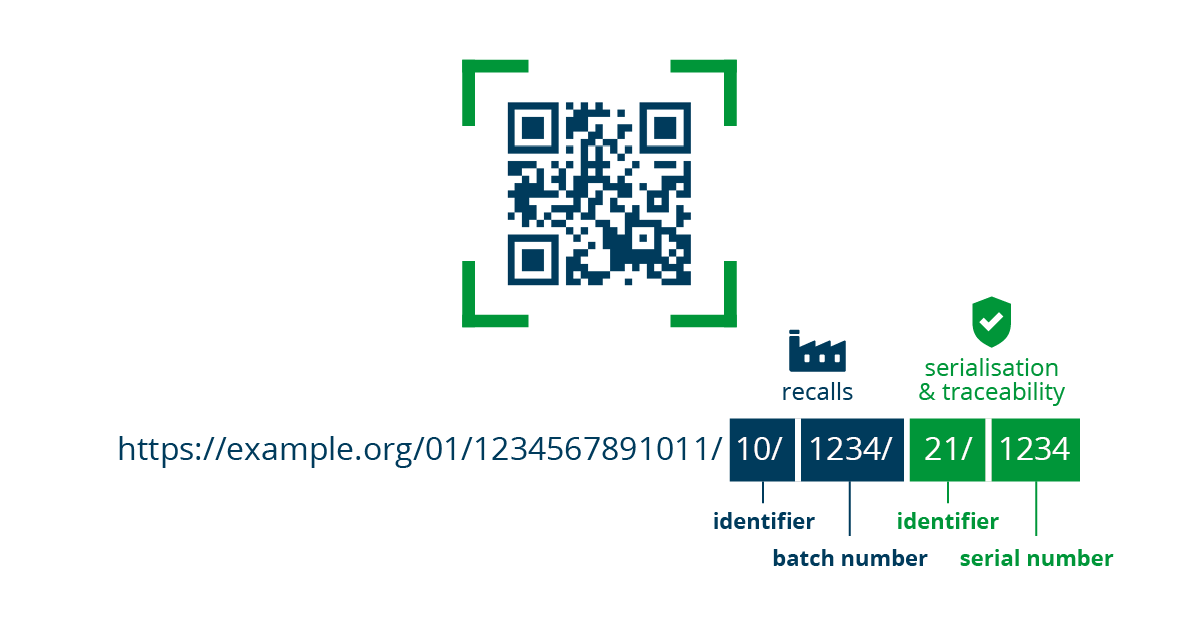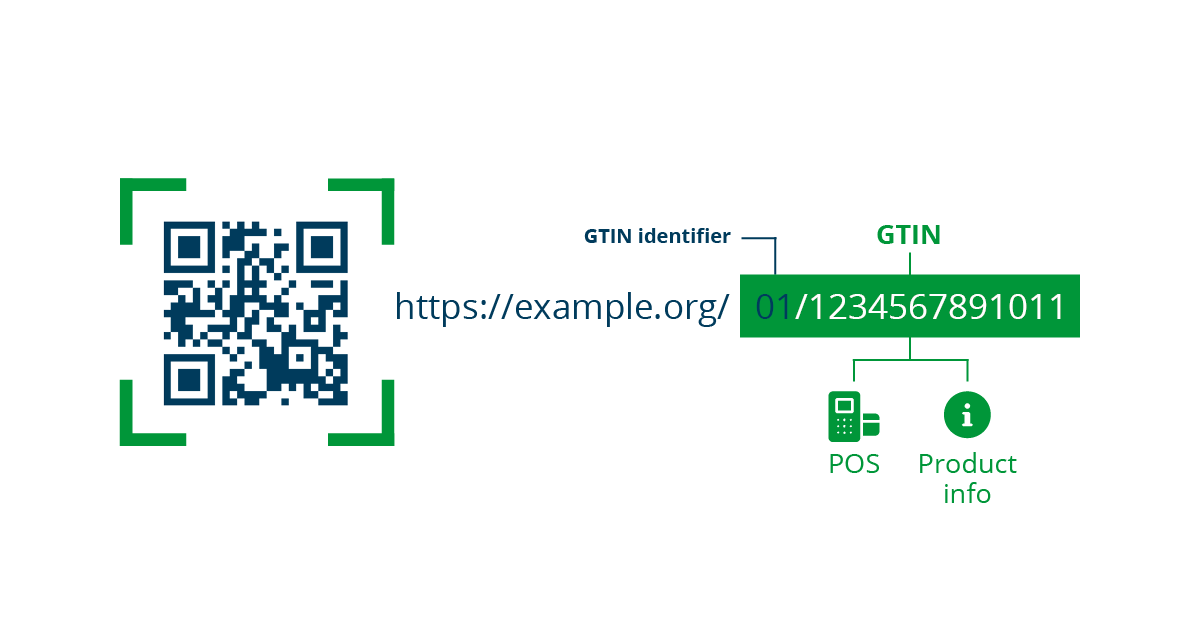On 26th June 1974, retail history was made with the scanning of the first-ever linear barcode. It started as a method to help supermarkets facilitate price look-up at the point of sale (POS) and has now become the common standard for commerce the world over, with global specifications managed by the international standards organisation GS1.
Linear barcodes are still scanned more than 6 billion times daily, but as demand increases for more product information on packaging, more brands are utilising 2D barcode formats to fulfil broader business goals.
Now, GS1 is preparing to transition away from 1D barcodes to a new 2D barcode format – the GS1 Digital Link. At the GS1 Global Forum in Brussels in Feb 2023, the standards body announced an official sunrise period for 2D codes starting in 2027.
So, what is the new GS1 Digital Link, and what does the phasing out of 1D barcodes mean for the industry? Lee Metters, Group Business Development Director, and James Cutforth, Global Sector Manager, Domino Printing Sciences, explore.
What is the GS1 Digital Link?
GS1 Digital Link is a simple, standards-based structure for encoding information in QR codes – effectively taking the retail barcode information and embedding it on the end of a URL – allowing that information to become part of the web. Identifiers such as a Global Trade Item Number (GTIN) – the number encoded in a linear barcode and used to identify a product at the checkout – are located within the Digital Link QR codes and become gateways to a range of information about a product.
Why is GS1 transitioning barcodes to the GS1 Digital Link?
In recent years, many brands have responded to the increasing demand for more data by adding secondary barcodes to their product packaging. A single pack might include a QR code for consumer-facing applications alongside multiple other data carriers for use at POS, internal stock control, or supply chain operations management.
And while consumers are now more adept at using 2D codes than ever, having multiple 2D codes on product packaging can still be confusing. It can also cause issues with scanning at POS systems and takes up valuable space on the packaging design.
GS1 has now officially set the gears in motion to help the industry transition to a single, data-rich 2D code, which allows everything from warehouse machinery and POS scanners to specialised apps and smart fridges to obtain information about a product.
A single GS1 Digital Link will deliver different information depending on the device used to scan the code and will provide opportunities to improve supply chain visibility, ensure product safety, and bring a wealth of information to consumers, both at home and in-store.
GS1 has now officially set the gears in motion to help the industry transition to a single, data-rich 2D code
Through the introduction and official sunrise of the GS1 Digital Link, the organisation is updating the GS1 system to work in this new data-focused world. The GS1 Digital Link standard has been developed in collaboration with some of the world’s largest retailers, manufacturers, and transport and logistics firms, to modernise the barcode in such a way that everyone can use it to better connect and share information, enhancing transparency and product authenticity and traceability, while enabling consumer engagement.
When linear barcodes were first introduced in the 1970s, few could have anticipated just how important they would become. We are now experiencing the same journey with 2D codes and the GS1 Digital Link – and Domino is actively supporting this transition. As a world-leading coding and marking provider with expertise in helping brands to fulfil regulatory serialisation requirements via 2D codes and long-standing partnerships with key industry associations, including GS1, Domino is well-placed to help manufacturers prepare for this new dimension in barcodes.


How much of a change will it be for manufacturing to move from 1D to 2D barcodes?
While the GS1 Digital Link standard provides a vision – and now a roadmap – for a future where a single, data-rich 2D code replaces the 1D, linear barcode, there are some challenges that manufacturers will need to consider when transitioning to the GS1 Digital Link.
Firstly, manufacturers must consider what information to include inside the code – whether this will be dynamic, batch- or item-related data, or higher-level product-focused information. Depending on their applications, brands may need to access and aggregate data from ERP systems and production lines for use in the 2D GS1 Digital Link.
Solutions for printing the QR codes will also need to be considered – including technology for product handling, printing, and code inspection. As with any product code, a GS1 Digital Link-enabled barcode can only be effective if it is correctly printed and can be effectively scanned.
Coding products in real time on production lines comes with its own challenges
Dynamic data contained within a 2D code, such as batch-related information (including batch numbers and ingredient variations, including nutrition and allergen info), product expiry dates, and unique product IDs, will require in-line, on-product coding rather than pre-coded labels.
Coding products in real time on production lines comes with its own challenges. In such instances, ‘bolting’ a coder onto an existing production line may not be optimal because often, production machinery is not designed with coding in mind, and so, product handling or the ‘presentation of the product’ to the coder becomes a crucial consideration in creating high quality codes. Manufacturers that choose to code products in-line without effective product handling will undoubtedly be subject to production line variations that will affect final code quality.
At best, a poor quality 2D code resulting from inadequate product handling will cause a high number of rejections, rework, and defective stock. Poor quality 2D codes can also have a knock-on effect on lines that require the aggregation of serialised products. The repercussions can be even more severe if an unreadable 2D code leaves the factory unnoticed. Brands can face financial penalties such as fines, loss of business, product recalls, and potential legal implications.
Domino is committed to helping brands and manufacturers to prepare for the rise of dynamic 2D codes. As a company, we have developed a range of globally compliant solutions designed to handle the fast processing of serialised data and high-quality, fast-paced printing of 2D codes, as well as verification systems and solutions to check code accuracy and facilitate data sharing.
What is the time frame for the implementation of GS1 Digital Link?
The official sunrise date for the GS1 Digital Link, at which point the legacy linear barcode can be removed for GS1-Digital-Link-enabled packs, is currently set for 2027.
As with any new standard, there will be a transition period with the GS1 Digital Link, and we are already seeing ripples of change among brands, retailers, and manufacturers, and many new innovative use cases for GS1 Digital Link codes. Worldwide, many retailers have also begun the process of updating their POS scanners to read 2D barcodes.
Of course, there is significant variation in maturity levels between regions and among manufacturers and retailers. Still, the adoption of the GS1 Digital Link is likely to expand quickly as more and more brands realise the benefits of greater data sharing.
One of the main challenges manufacturers will face is to agree internally on the content of this new GS1 Digital Link and ensure that their lines are equipped to handle new data requirements and effective printing. Those seeking more information on how best to do this should save time by enlisting the support of a global coding and marking provider with a range of globally compliant barcoding solutions and experience in data management and roll-out of 2D codes.




